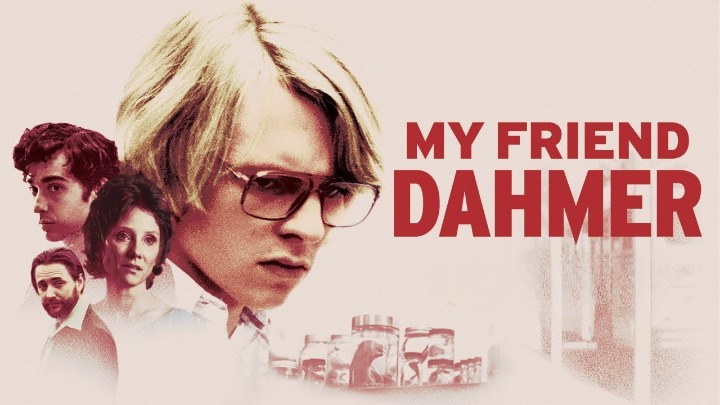If you’re looking for the kind of violent, provocative and cathartic experience promised by typical serial killer thrillers, you’ve come to the wrong place. My Friend Dahmer doesn’t contain a single on-screen murder, kidnapping or instance of cannibalism.
It’s closer in structure and content to a coming-of-age high school drama (Think The Breakfast Club, Better off Dead) than to anything David Fincher ever made (Seven, Zodiac).
The picture comes to us from a graphic novel of the same name, written and illustrated by a former classmate of Jeffrey Dahmer’s named John Backderf (or “Derf”), played here by Alex Wolff. Marc Meyers directs the picture from his adapted script of the source material.
There are no distracting bookends or knowing voiceover from the Backderf of today, who will one day grow up to write the story he’s starring in. Overall, I admire the filmmaker’s straight and painful delivery. I should warn you that the picture drones a bit, but that’s just the tradeoff for a story that favors showing over telling.
To be clear, I find our collective fascination with killers problematic at best. What possible good does it do to study, ruminate on and glorify this shit? Yet, when it comes to ogling killers, I’m among the worst of us. I’ve always been curious about Dahmer, whose pathology is so unlike many other serial killers.
He was homosexual, alcoholic and overly emotional. Racked by guilt after his killings (at least at first), Dahmer insisted he never wanted to hurt his victims, even as he was drilling holes into their heads. He seemed motivated more by necrophilia than a simple desire to make people dead.
After Dahmer was caught and confessed, he gave candid and contrite interviews about the killings and the depth of his own psychosis. His story ends anticlimactically in 1994 when he was beaten to death by fellow inmates in a Wisconsin penitentiary.

This is what drew me to Backderf’s inside account of Dahmer, whom we see as an awkward, pitiful teen, who tried desperately to fit in during the school day, then spent his evenings dissecting roadkill in the woods.
Ross Lynch stars as young Dahmer, a guy we meet during his junior and senior year at an unassuming high school in Ohio in 1977 and 1978. (Parts of the film were shot at Dahmer’s real childhood home, nestled on two acres of woods.) He lives with his mother (Anne Heche), who was by all accounts an anxiety-ridden pill-popper, and his well-meaning chemist father (Dallas Roberts).
His parents fight a lot and eventually divorce, which is chaotic, sure, but hardly enough to create a killer on its own, right? At school, Derf and a couple of his buddies notice Dahmer’s bizarre behavior, befriend Dahmer and initiate a “Dahmer fan club,” characterized by equal parts mockery and sincere affection. Derf and his friends are neither popular nor losers. They are among the most convincing teenagers I’ve seen on film, and their complexity and depth mark the picture’s biggest strength.

There’s been more than a few films about Dahmer by now. (I recommend two others with total enthusiasm: 2002’s Dahmer starring Jeremy Renner, which feels more like a stage play than anything, and the 2012 documentary, The Jeffrey Dahmer Files).
My Friend Dahmer occupies a strange, uncomfortable space in that canon. I think we come to serial killer pictures for the bloodletting. Here, we get something far worse: an unlovable teen, doubtlessly troubled from the start, teetering perilously between a life filled with the century’s most despicable violent acts and mere unhappiness. Every high-schooler feels like a creep sometimes. But Dahmer showed us, right? He became the sickest, weirdest person on earth.

